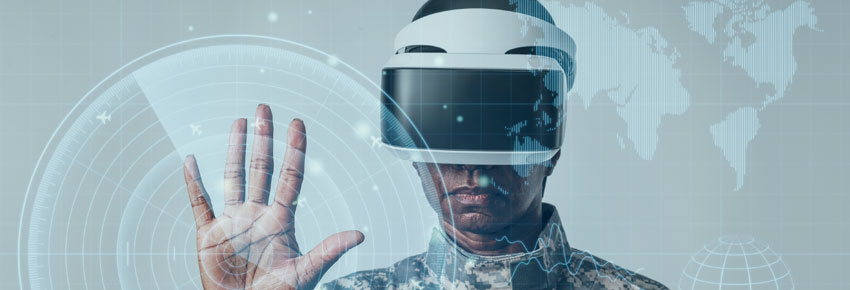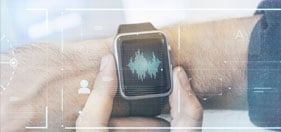How Enterprises Can Drive Innovation Using Wearables
ago 27, 2021 | 42Gears Team
The consumer market is flooded with wearables such as smart glasses, health trackers, AR glasses, sensors, badges, watches, lenses, and bracelets. Wearables have tremendous potential for businesses too. They can impact how businesses operate, make decisions, and engage with customers and employees.
According to a 2021 report by Markets and Markets, “the enterprise and industry wearable market is expected to grow with the highest CAGR of 22.5% between 2021 and 2026. This growth can be attributed to increasing demand for wearable scanners and computing devices in sectors where speed and efficiency are paramount, such as warehouse operations and logistics.
How enterprises can drive innovation using wearables
Manufacturing

Wearables such as wristbands, headwear, and connected clothes can be useful tools in workers’ hands. While consumer wearables have a variety of features, industrial wearables typically offer narrow, specialized feature sets optimized for harsh frontline environments where consumer wearables might fail. In manufacturing, wearable devices can be used to provide workers with real-time data on machinery malfunctions and hazardous conditions (like spilled fluids). Also, wearables (such as the latest enterprise edition of Google Glass) are helpful in promoting worker safety; for example, they can alert workers about dangerously hot surfaces.
By using wearables, manufacturing industries can ensure employee well-being and reduce health insurance costs. Additionally, supervisors can safely train workers on dangerous tasks through the use of AR glasses and wristbands.
Healthcare

Wearables also can play a crucial role in the healthcare industry. Wearables can constantly observe and collect data such as body temperature, pulse rate, and other important vitals to improve treatment. Doctors can get patients’ real time health data and receive notifications in case any deviations occur. An example of wearable applications in healthcare is the use of EMG (electromyography) sensors to measure muscle movements to help rehabilitate stroke victims or patients adjusting to prosthetics. Moreover, healthcare professionals can use wearable devices for monitoring glucose levels, detecting heart attacks and asthma problems, and much more.
Retail

Wearables can also bring innovation to the retail industry in many ways, such as enhancing the in-store shopping experience and streamlining in-store communication (by using smart headsets and walkie-talkies). Firms can optimize the store layout by using line-of-sight wearables, which enable planners to visualize merchandise set-ups and better utilize space. Smartwatches help increase productivity by reducing the time and effort required for processing payments. Additionally, retailers can increase customer engagement by sending real-time offers based on shoppers’ in-store locations.
Wearable cameras can be set up to prevent robberies in case of late night deliveries or in areas where workers frequently work alone.
Business Travel

Some wearables can greatly help business travellers navigate and negotiate while abroad. Businesses can offer these devices to their employees to make their business travel experience better and to make a good impression on clients. One helpful device is the Ambassador Interpreter, a wearable translation device made by Waverly Labs, which can automatically translate spoken language from one language into another. Samsung has even revealed a prototype “smart business suit,” which features sensors that can help the wearer control their smartphone, exchange business cards, and more.
Education

Wearables can be a game changer in the education industry too. They can improve student engagement and the quality of teacher-student communication. For example, students can use virtual reality headsets to explore three-dimensional models of the human body, providing a more memorable learning experience than a textbook could offer.
By using smartwatches, students can learn foreign languages, play interesting educational games, and even track their health parameters such as calorie intake, heart rate, etc.
Summary
Like any new technology, wearables can transform businesses and lives for the better. However, these wearable devices still need to be managed, secured, and maintained. Another potential concern can be user privacy. Businesses must adopt a UEM (unified endpoint management) solution to manage these wearable devices. The UEM solution can help manage and maintain a firm’s wearables, and also help to secure sensitive data accessed through those wearables.
SureMDM, the 42Gears UEM solution, offers comprehensive features that empower businesses to easily manage and control their wearable devices while securing the corporate data stored on them.
Are you looking for a smart
wearable management solution?
Subscribe for our free newsletter


